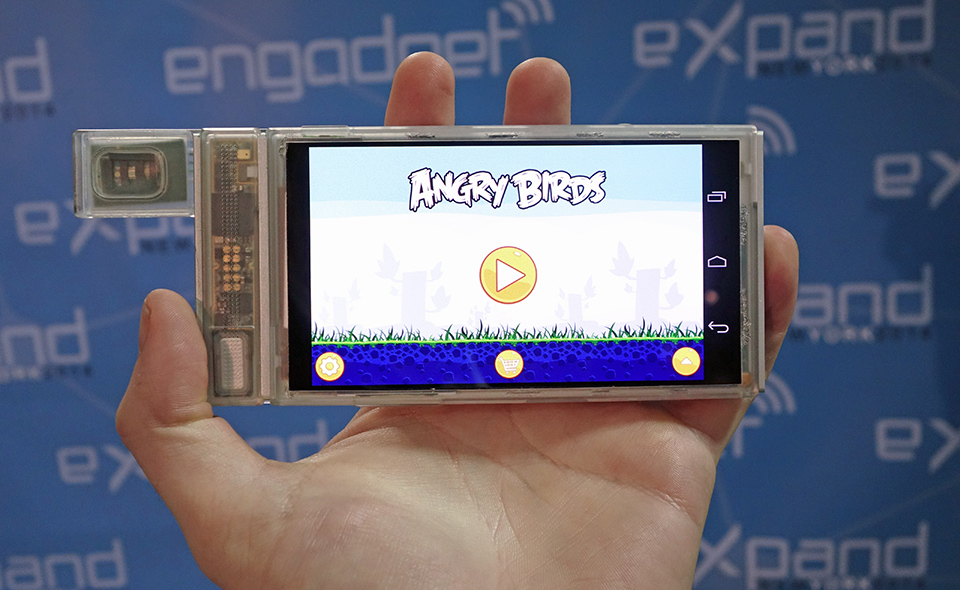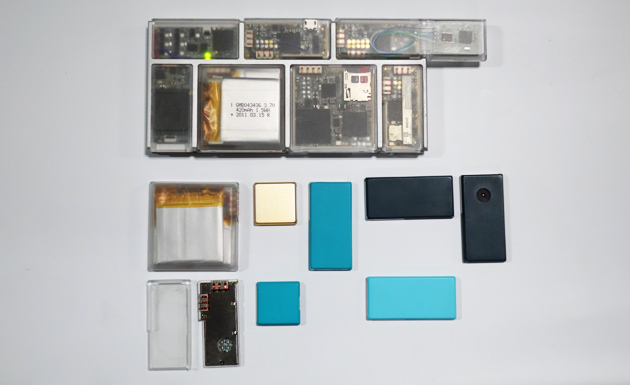 What
do you want to know about Project Ara? Does a modular smartphone
actually work? Yes. Is it very different from Android phones? In a basic
how-a-phone-all-works, yes indeed. Paul Eremenko, Technical Project
Lead on Google's modular phone project just called in at Expand NY, and
he brought along the latest working prototype. Modular phones do indeed
work: you can take out a component without bricking the device, it can already run Angry Birds and we just got to play with one.
What
do you want to know about Project Ara? Does a modular smartphone
actually work? Yes. Is it very different from Android phones? In a basic
how-a-phone-all-works, yes indeed. Paul Eremenko, Technical Project
Lead on Google's modular phone project just called in at Expand NY, and
he brought along the latest working prototype. Modular phones do indeed
work: you can take out a component without bricking the device, it can already run Angry Birds and we just got to play with one. The Project Lead also introduced one of the more interesting directions that modular smartphones could take: customizable health sensors. He pulled out a pulse oximeter able to measure blood oxygen with light. A phone packed full of these kinds of sensors could offer a very powerful diagnosis for doctors -- especially when hardware costs are already covered when you buy an initial modular smartphone base.
As we saw earlier this week, the latest Ara prototypes do indeed work. Live on stage, Eremenko was able to undock a module inside the phone's UI and then physically pull it out, without the phone hiccuping (or simply cutting out of power.)
It may have only been a demonstrative LED module, but the theory works. He elaborated on how any component can be made to give power, take power or simply store it, thanks the networked nature of the phone's power system. Behind stage, we got to pull components in and out of both the new working prototype and the (non-working) industrial design model, in those bombastic colors. It's pretty satisfying to do and there's a Lego-ish charm to it all.

The virtue of each smartphone feature being a separate part is what could make the eventual commercial product of this project a very interesting proposition for developing countries, where people would be able to upgrade phones in a step-by-step fashion, avoiding the need for a costly outlay, but offering the possibility of a more capable device later down the line: move up from a 8-megapixel camera sensor to a 16-megapixel one capable of 4K video, for example. If it did catch on, it could even spell the end of the two-year upgrade cycle for your smartphone. Well, maybe. See the full discussion (and an epic stumble from our own Brad) in the full interview below.













